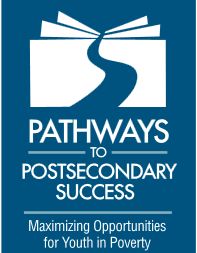 By Sara Lipka. Community colleges contend with a difficult reality: Many students show up unready for college-level work, and few of them catch up and graduate. To shift that status quo, as campuses around the country introduce new models of remedial, or developmental, education, some are trying to reduce the need for it.
By Sara Lipka. Community colleges contend with a difficult reality: Many students show up unready for college-level work, and few of them catch up and graduate. To shift that status quo, as campuses around the country introduce new models of remedial, or developmental, education, some are trying to reduce the need for it.
The American Association of Community Colleges set a bold goal at its annual meeting here this week: to decrease by half the number of students who come to college unprepared. In presentations on Sunday and Monday, administrators and faculty members shared ideas for how to do that, describing new partnerships with local school districts to offer the colleges’ remedial courses to high-school students. Catch them up, the thinking goes, before they’re behind.
William Penn Senior High School needs that kind of intervention, presenters from Harrisburg Area Community College said here. The college’s York campus, in south central Pennsylvania, sees more students from nearby William Penn than almost anywhere else. Ninety-two percent place into remedial reading, and 100 percent into remedial mathematics. “These kids are scoring in the lowest developmental levels that we have,” Marjorie A. Mattis, the campus dean, told an audience of educators from Kansas, Montana, Oregon, and Texas. “How long can we sit back and see these types of results and not do anything about it?” Conversations with the superintendent produced a plan. Last year on a pilot basis and this year for all seniors at William Penn, English and math follow the college’s developmental curriculum.
Students take placement tests at the end of their junior year, and in the fall they report to a “HACC hallway,” painted in the college’s colors, with classroom tables instead of desks. Teachers must meet the criteria for instructors at the college, which at least one already is. Summer sessions familiarize them with the college’s textbooks, syllabi, and method of assignment review, and during the year the teachers work with college-faculty liaisons. At the end of the pilot year, tests—offered on the York campus, so students might take them more seriously—showed significant improvement. In English 37 percent of students placed one level higher than they had initially, and in math 39 percent did. “We’re not going to say that we have every student college-ready, but we’re going to have them more ready than when we started,” said Ms. Mattis. If fewer students place into the lowest levels of developmental education, she said, that’s progress. In general, said William Penn’s principal, the program has more students thinking about college.
Plans to Scale Up
Anne Arundel Community College, in eastern Maryland, is pursuing a similar strategy in math. With a grant from the League for Innovation in the Community College, Anne Arundel and its county’s public-school system compared their curricula and opted to offer a pair of the college’s developmental-math courses in two high schools. Starting last academic year, seniors shifted to a model called Math Firs3t, an abbreviation for “focused individualized resources to support student success with technology.” The computer-based approach involves mastery testing, in which students retake tests until they score at least 70, said Alycia Marshall, a professor and interim chair of mathematics at Anne Arundel, describing the program during a session here. Of 134 seniors last spring, 107 passed both of the developmental courses, she said. And of those students, 34 enrolled at Anne Arundel and registered for a credit-level math course, which is often a stumbling block for students coming out of remediation. But 30 of them passed. College and school officials may soon bring the model to other high schools, said Ms. Marshall. “We’re excited about scaling this up,” she said, “because of the success rates.” This year New Jersey’s 19 community colleges are studying numerous interventions to prepare local high-school students for college-level work. Burlington County College plans to help adapt high-school courses, while other institutions are experimenting with software and summer boot camps.
Such approaches require close, continuous collaboration between colleges and school districts: “the end of the finger pointing,” Patricia C. Donohue, president of Mercer County Community College, said after a presentation. “By partnering with schools,” she said, “we’re trying to be part of the solution.”




